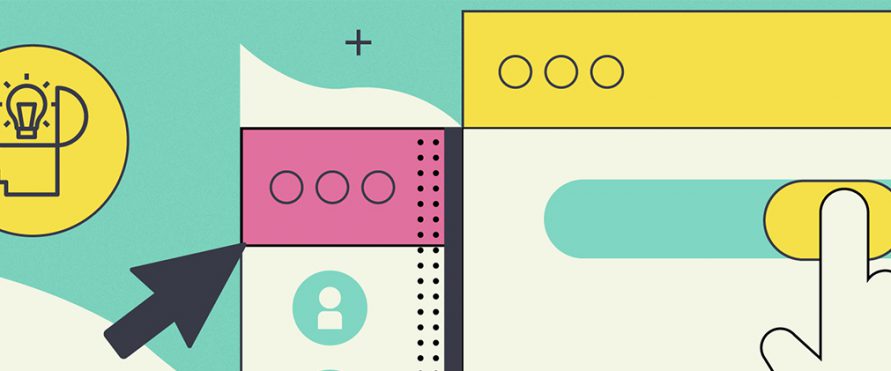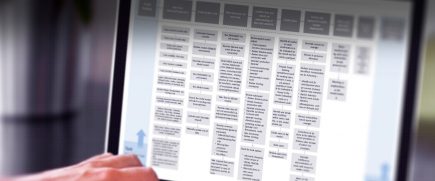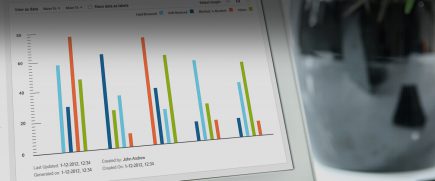Leveraging Opportunities To Craft Advanced Ux & Cx Initiatives
An emerging ecosystem of microservices, containers, cloud scalability, devops, application monitoring, and streaming analytics is not a fad. It’s the future, already powering Silicon Valley and the world’s most advanced tech companies. Throw in machine learning and IoT and you have a comprehensive framework for the next phase of Enterprise IT, with continuous improvement as its founding principle.
According to a recent survey*, only 20.7 percent of manufacturing organizations surveyed rated themselves as “highly prepared” to address the emerging business models the Fourth Industrial Revolution brings. However, industrial leaders worldwide are increasingly digitizing essential functions within their vertical and horizontal operation processes, with a clear focus on the end-to-end digitization of all physical assets and integration into digital ecosystems.
Since the dawn of the digital era, businesses have been doing more with each passing year: Becoming digital themselves; growing more involved in people’s lives; embracing the “People First” view of the changing enterprise landscape while betting big on advances in data-hungry technologies. Global AI in IoT market was USD 4 billion in 2018 and is expected to reach around USD 19.9 billion by 2025, at a CAGR approximately 25.89% for the forecast period between 2019 and 2025*.
In such a scenario IT’s traditional delivery models can no longer keep up with the rapid-fire pace of technology innovation and the disruptive change it fuels. It’s an overarching priority for a company to quickly evolve into a forward-thinking enterprise where IT itself can transform to dramatically improve how organizations harness technology and deliver value. While ensuring that security fulfills its prerogative to be interwoven into infrastructure and operations seamlessly.
Challenges Into the Next Phase of Enterprise Experience Design
1. Customer experience will become Customer Intelligence
Digital integration with the customer and new technological opportunities would move production closer to the customer, for example, with an increase in the number of digital natives, e-commerce or marketing digitally will demand greater individualization and customization of products and services. More organizations would require to use data analytics to meet customer requirements and improve operational performance. 72% of executives report that their organizations seek to gain customer trust and confidence by being transparent in their AI-based decisions and actions*. Customizing products all the way down to building a customer-focused supply chain would be imperative to changing the relationship with customers in response to changing needs and behavior.
2. Data Security and robust system will drive enterprise growth
Digital ecosystems and broad use of data raise important issues around cybersecurity. More touchpoints where data is collected and exchanged also means more potential points of entry for an attacker. requiring an end-to-end management of risks, threats and security issues. Unverified data is a new type of vulnerability— one that every business leveraging digital technologies must address. Left unchecked, with autonomous, data-driven decision-making increasing across industries, the potential harm from bad data could become an enterprise-level existential threat.
3. Digitization would disrupt legacy systems
The widening gulf between this new world and most existing enterprise IT operations calls for a leap of change from legacy to modernity requiring profound, multiphase, across-the-board change. Lack of digital culture and training is the biggest challenge facing companies, along with cross transformation along organization, people, processes and technology. To fully power the connected intelligent enterprise, companies must first re-architect themselves.
These technology trends offer CIOs and their teams a roadmap for fundamentally overhauling IT from the bottom up and the top down. The wealth of data mined from the increasing number of sensors and connected nodes, advanced computing power, and improvements in connectivity, along with rapid advances in machine intelligence and neural networks, are motivating companies to truly transform.
Yet an explosion of new technological capabilities will stand tall to address challenges only with an integrated approach that also takes business problems in a comprehensive view. Design thinking as an approach is an imperative solution which enterprises could leverage to reinvent themselves while being in accordance with existing systems.
How Enterprise UX Design Services Enhance Digital Transformation
1. Creating Customer-Centric Solutions
Most digital systems were designed for the systems and not the users of those systems. With design-based approaches and research facilitating customer journey mapping, persona creations, design re-establishes the center of gravity to shift towards the needs of customers.
2. Gateway to Simple and Intuitive Interfaces
As the attention span of users continues to decrease, design focuses to make the experience upfront sans deep hierarchies or repetitive steps. Validated with the users, interaction design enables to transform the experience to one which is engaging and easily comprehended.
3. Boosting Collaboration
As enterprise applications necessitate a lot of collaboration and interdependencies to complete tasks, handoffs, navigation frameworks need to be well visualized and designed for expedited implementations.
4. Supplementing Intelligent Solutions
User Experiences in Enterprise applications are defined by how intuitive the applications are; the advent of AI, VR, AR, Predictive analytics and forecasting in enterprises could be leveraged by designing them to capture maximum user data and insights.
5. Building Digital Trust
As cybersecurity turns as a top priority for enterprises, designing products and services with visual cues that assuage users and build a perception of trust and confidence would go a long way to ensure engagement.
As design practitioners increase focus on enhanced Enterprise IT experiences and the convergence of new-age technologies, experience led practices and affordability of IT systems increase, the dawn of a symphonic enterprise is just around the corner. At Think Design, we manifest evidence of this every day of our work.
Looking Ahead: Futuristic Trends reshaping the world of enterprises
1
Enterprise learning and employee engagement
Collaborative solutions
BYOD
Cross-platform applications
Think Design’s Recommendation
Work is no longer a place but, rather, a thing you do. Companies are recognizing that they must provide the right tools to their employees to make them more productive. From a people standpoint, they are also transforming the culture and how teams work to foster creative thinking and drive faster product deployment. The trend offers companies the opportunity to reimagine an entirely new organizational model in which humans and machines become co-workers, complementing and enhancing the other’s efforts in a unified digital workforce, through integrative solutions.
2
Digital solutions changing the enterprise ecosystem
Growth of enterprise tailored apps
The use of mobile apps to improve operational efficiency and customer experience has accelerated; companies are increasingly moving from generic apps to enterprise fit apps with specific functions. This avoids functional redundancy and ensures user-specific features resulting in a more streamlined workflow process.
Hybrid Cloud
API Revolution
Think Design’s Recommendation
3
Intelligent solutions driving transformation
Artificial Intelligence and Big data
Multi-layered security model
Intelligent Distributed systems
Think Design’s Recommendation
Think Design’s approach and recommendations to achieve superior enterprise user experiences
1. Always, design for the user
2. Personas, Actors, Segments: Clarify user types
3. Handoffs are critical: Design them well
4. Validate with users early on
5. The future is now; and it is intelligent
Partnerships impacting Enterprise & IT experiences across the world












Creating Value in Every Industry
News media & Entertainment
Know More
Enterprise & IT
ERP, Utilities, HRMS, Planning tools, Data & Analytics, LMS, Enterprise systems, Productivity suites.
Know More
Healthcare & Lifesciences
Medical devices, Hospital management systems, Pharma, Wearable tech, Personal healthcare, Fitness, Wellness.
Know More
Networks & Smart devices
Telecom, Home automation, Data networks, M2M, IoT, Utilities, Law enforcement, Defense & Border security.
Know More
Education & Edtech
Institutions, Portals, Apps, Learning management, Gamified learning, MOOCs, Universities, Learning centers.
Know More
Banking & Financial Services
Fintechs, Banks, Insurance, Payments, Wallets, Lending, Trading, Investment, Blockchain, Currencies, Wealth management.
Know More
End-to-End Design Expertise




